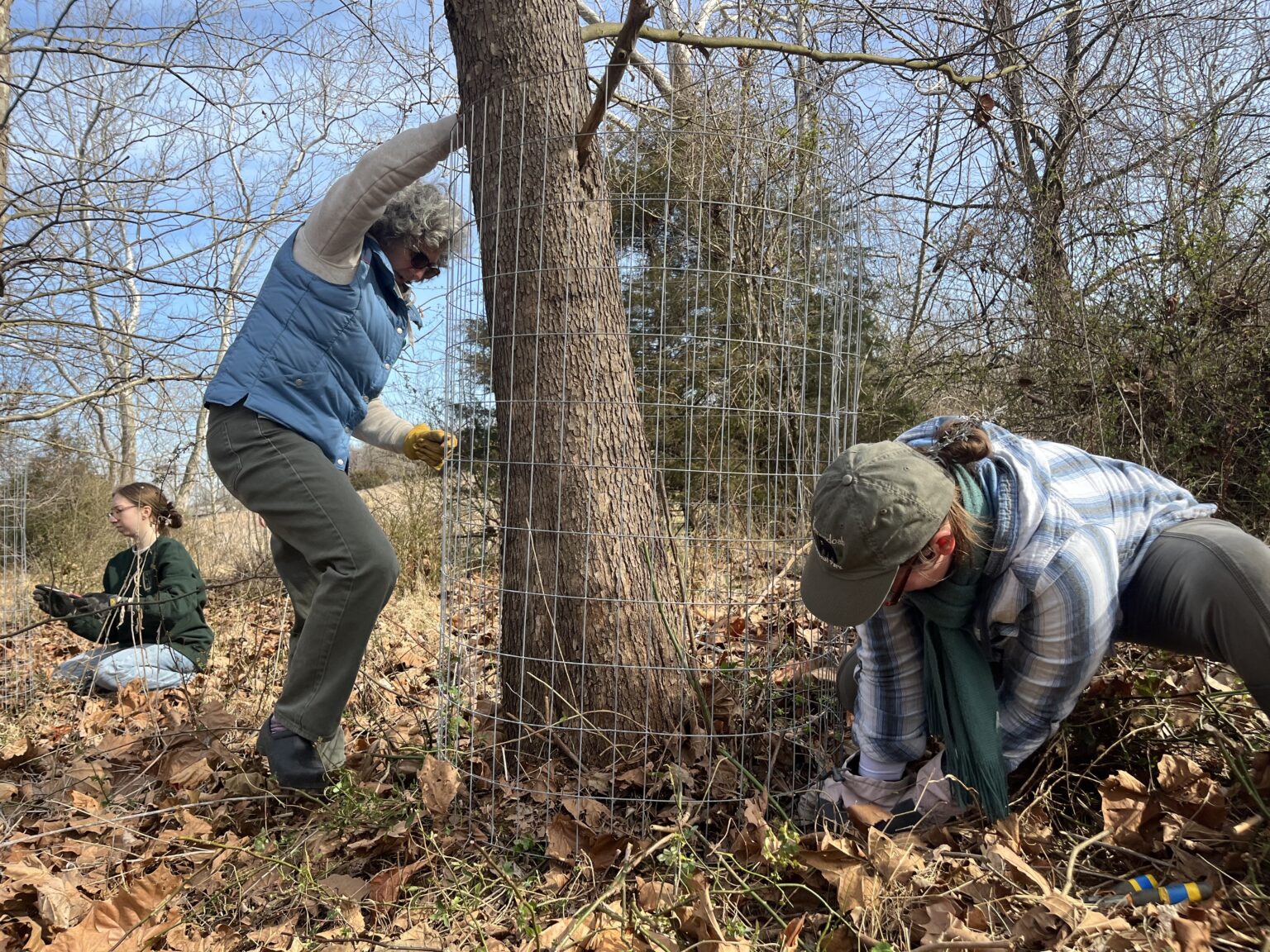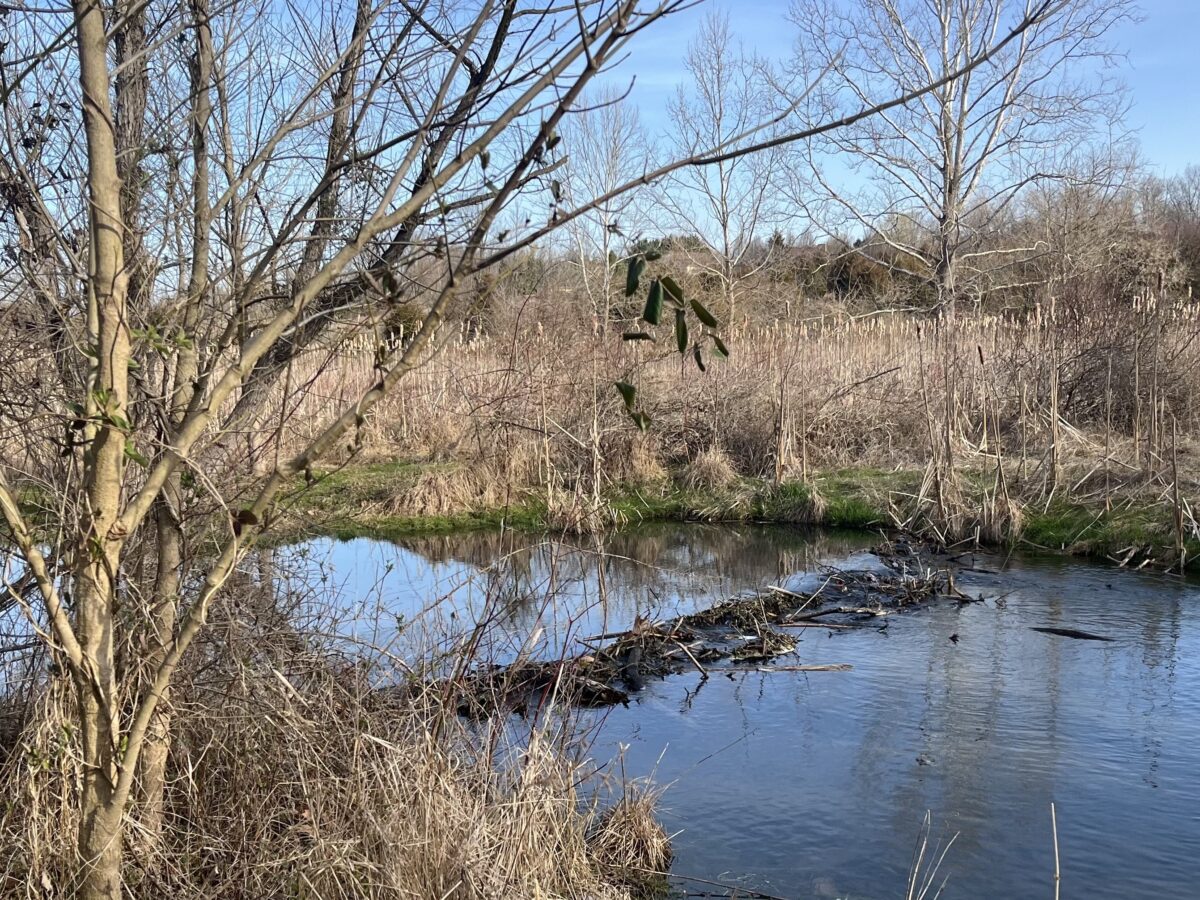Thank Goodness! The dry spell is over and we finally have good beaver news to report, This time from West Virginia!
As Beavers Return To W.Va. Wetlands, Conservationists Promote Coexistence
 Donning rain boots and gloves, volunteers trudged across a Charles Town wetland Tuesday to prepare the habitat for a pair of unexpected residents.
Donning rain boots and gloves, volunteers trudged across a Charles Town wetland Tuesday to prepare the habitat for a pair of unexpected residents.
Jefferson County’s Cool Spring Preserve is currently home to at least two beavers, possibly mates, according to local conservationists. If trail camera photos did not offer proof enough, their presence is made clear through bite marks on trees and a growing number of dams in Bullskin Run, the local stream.
Beavers are native to wetlands across North America, including those in West Virginia. But they were hunted to near-extinction during the 18th century fur trade. With fewer people hunting them for their pelts, beavers are growing in population across the continent. According to many conservationists, that’s a good thing.
Alison Zak serves as founder and executive director of the Human-Beaver Coexistence Fund. The group develops nonlethal strategies to manage beaver populations across the mid-Atlantic.
Zak said that beavers play a key role in bolstering biodiversity, storing groundwater and filtering pollutants in wetland ecosystems. But they also bring what she describes as “beaver problems,” which fall into two main categories: flooding and tree damage.
When beavers build dams, they can redirect the flow of water and prompt flooding. This can disturb roadways and personal property, so conservationists often fence off culverts so beavers cannot disrupt the flow of water with their dams.
Hurray for the Human Coexistence fund. I can’t believe Joe Manchin’s state is wrapping trees for beavers. That tickles my nose like champagne.
 Beavers can also chew trees that protect rivers from erosion, as well as saplings planted as part of reforestation efforts. In response, conservationists build wire fences around the bases of trees that need to be protected from local beavers.
Beavers can also chew trees that protect rivers from erosion, as well as saplings planted as part of reforestation efforts. In response, conservationists build wire fences around the bases of trees that need to be protected from local beavers.
That is what brought a team of volunteers onto the preserve Tuesday: to help build fences that ensure trees and beavers can coexist in West Virginia and to strengthen wetland ecosystems.
“A lot of people aren’t aware beavers are around unless, all of a sudden, they come across very obvious signs of beavers, maybe even causing problems on their property,” Zak said. “But also, we’re seeing an increase in tolerance toward beavers, and people wanting to use nonlethal management and wanting to coexist.”
Tuesday’s volunteers placed new wire frames around the bases of trees with overly tight fences or no fences at all. They took particular care to cover saplings, and to give trees enough space to grow freely.
KC Walters, associate director of conservation at Potomac Valley Audubon Society, organized Tuesday’s event. She said that coexistence strategies like these help people come together to solve environmental problems.
“It’s not just conservation, and not just about the relationship with wildlife,” she said. “It’s also about the relationships of the human organizations that exist in keeping us all working together for a common goal.”
Zak said she hopes volunteers left Tuesday’s event with a better understanding of how conservation works.
“I hope they got a little taste of how complex it can be, but how also doable it is,” she said.
Getting audubon involved is smart work. They want those trees for nesting grounds and are motivated to learn about anything that increases the bird population. Good work Alison!





































